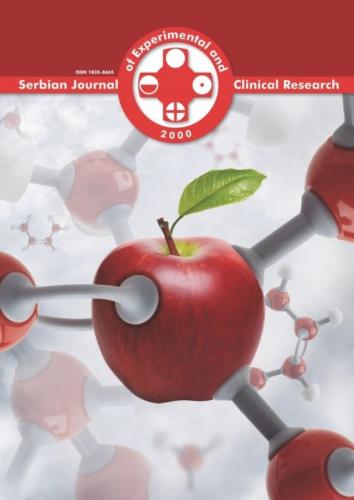The Impact of Nano-Crystal Hydroxyapatites on the Regeneration of Bone Defects
Categoría del artículo: Original Scientific Article
Publicado en línea: 15 dic 2021
Páginas: 233 - 242
Recibido: 06 may 2021
Aceptado: 19 jul 2021
DOI: https://doi.org/10.2478/sjecr-2021-0053
Palabras clave
© 2024 Aldos Issabayev et al., published by Sciendo
This work is licensed under the Creative Commons Attribution-NonCommercial-NoDerivatives 4.0 International License.
Calcium hydroxyapatite is a widely used material for replacing bone defects. However, the effectiveness of nano-crystalline calcium hydroxyapatite produced from eggshells in the replacement of bone defects has not been investigated yet. The study aimed to evaluate the effectiveness of using nano-crystalline calcium hydroxyapatite made from eggshell for the healing of bone defect of the femur in rats. Forty-eight (n=48) rats underwent a surgical procedure to simulate femoral defect. The animals were sub-divided into 4 groups (each with n=12) depending on the methods of bone defect replacement: I control group (CG) (without bone defect replacement); II intervention group (the bone defect was replaced by PRP (PRP); III intervention group (the bone defect was replaced by nano-crystalline hydroxyapatite obtained from eggshell) (HA) and IV interventional group (the bone defect was replaced by a combination of hydroxyapatite and PRP) (HA+PRP). The degree of effectiveness of studied methods was assessed using radiological (on the 14th day), histological (on the 61st day), and biomechanical analysis (on the 61st day). According to radiographic data, the CG group had the lowest level of bone regeneration after 14 days (4.2 ± 1.7%). In the HA + PRP group, the level of bone regeneration was 22.1±7.1 %, which was higher in comparison with the rates of consolidation of bone defects in the HA group (20.7± 9.3) (p = 0.023). According to the histomorphometry data, the rates of bone tissue regeneration in the PRP group (19.8 ±4.2%) were higher in comparison with the CG group (12.7 ± 7.3%), (p>0.05). In the HA+PRP group, bone regeneration rates (48.9±9.4 %) were significantly higher (p=0.001) than in the HA group (35.1±9.8%). According to the results of biomechanical assessment under the maximum stress (121.0722), the maximum bending deformation of the contralateral bone without defect was 0.028746, which was higher than the indicators of the HA+PRP group, where at the maximum stress (90.67979) the bending deformation was 0.024953 (p>0.05). Compared to CG, PRP, and HA, biomechanical bone strength was significantly higher in the HA + PRP group (p≤0.01). At the maximum stress (51.81391), the maximum bending strain in the CG group was 0.03869, which was lower than in the PRP group, where the maximum stress and bending strain were 59.45824 and 0.055171, respectively (p>0.05). However, the bone strength of the HA group was statistically significantly higher compared to the CG and PRP groups (p<0.01). The results demonstrated the effectiveness of the use of nano-crystalline calcium hydroxyapatite obtained from eggshell in the healing of a bone defect. The best results were observed in the group of the combined use of nano-crystalline calcium hydroxyapatite and PRP.
